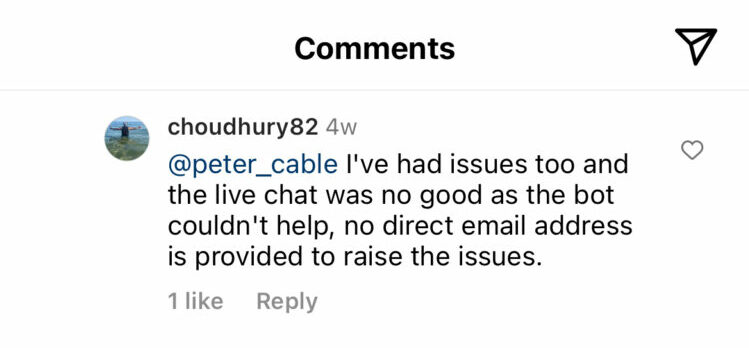Update: SmileDirectClub ceased operations on December 8 2023. Read my full update here.
A bankruptcy filing could spell the end for one of the best-established and ubiquitous direct-to-consumer ortho brands.
But that doesn’t necessarily mean the end of the direct-to-consumer model.
Here’s why dentistry is too important for shitty business models and some thoughts on one of my most frequently asked questions at TCO and patient communication workshops—how to handle patients who believe unsupervised clear aligner treatment is a good idea.
Is Home Endo the Next Big Thing?
I’ve had a killer idea for the next big thing in telehealth.
EndoGo will allow any patient reporting a toothache to order a state-of-the-art home endodontics kit complete with London tweezers, spoon excavator, scalpel, Glick blade, plugger and sealant.
Patients will also receive a close-up mirror and full video instructions (recorded by me) for self-administering endodontic surgery from the comfort of home.
By circumventing clinical expertise, affordable EndoGo will democratise endodontic treatment, opening access to this vital treatment for many thousands of patients who couldn’t otherwise afford care.
I’m offering a 10% stake in the business for your investment of £250m.
Are you in?
Nah. Thought Not
Dentistry is too important for ill-conceived business models like these.
For perspective, consider the potential fallout from the recent Chapter 11 bankruptcy filing by an orthodontic provider, which claims to have straightened 2 million smiles worldwide with little clinical intervention or supervision.
SmileDirectClub—the OG direct-to-consumer ortho brand—filed for bankruptcy on Friday, September 30, after failing to turn a profit since its much-hyped $8.9BN IPO in 2019.
The company’s market cap was just $163m before the filing on Friday, and its stock was down to $0.42 from $23 at launch.

A further hammer blow was dealt by the announcement that SmileDirectClub securities would be delisted from the NASDAQ exchange on October 4.
Founders have promised to inject $60M on the promise of a buyer meeting certain conditions, with founders Alex Fenkell and Jordan Katzman anticipating a ‘brief’ restructuring.
Nevertheless, it appears SmileDirectClub is still open for business here in the UK at the time of writing, and I was still able to order a kit as late as October 6.
Trouble a t’mill leaves the patients’ health hanging in the balance—and we don’t yet know how many that could turn out to be.
Hate to say we told you so
Like flat earth conspiracy and the Kardashians, direct-to-consumer (DTC) orthodontics is another of the 21st century’s bad ideas that refuse to die.
When the concept of DTC emerged with SmileDirectClub in 2019, clinicians were quick to point out the lunacy and potential dangers of patients undergoing unsupervised treatment.
When I interviewed the usually mild-manned Tif Qureshi about it, he responded by sucking his teeth: “I think there’s going to be enormous problems,” he warned.
“[Providers] may well be curbed by some of the lawsuits that will inevitably occur because it is impossible to do orthodontics properly without assessing and diagnosing patients.”
Read that again.
It is impossible to do orthodontics properly without assessing and diagnosing patients.
Tif would be too polite to say it: but you have to wonder what mind-altering drugs were being passed around when seemingly rational clinicians thought it would be a good idea to offer unsupervised ortho treatment to +2m patients—with no diagnosis or assessment.
I Mean, What Could Possibly Go Wrong?
A BBC expose SmileDirect on SmileDirectClub from January 2023 shows Tif’s concerns to be prescient and well-founded.
The article highlights the experience of patients left with weakened dentition, loose teeth and other problems—but unable to access support from SmileDirectClub clinicians.
Dentist Victoria Samson reported treating a patient who lost two front teeth during treatment with SmileDirectClub because their teeth couldn’t withstand pressure from the aligners—a complication that should have been diagnosed and planned for.
Experts agree with Tif’s assessment: “You want to create a beautiful smile, but you also want to create a healthy smile,” Dr Anjli Patel at the British Orthodontic Society told the BBC, warning that failure to monitor treatment could lead to ‘disastrous’ health consequences.
Tif was also right about the lawsuits. In August 2023, SDC was ordered to pay a $63m arbitration settlement to its former strategic partner Align Technology following a lengthy legal saga of claims and counterclaims over breach of terms.
The payment seems likely to have contributed to SmileDirectClub’s $850m debt, against which it now seeks restructuring.
But it isn’t the only lawsuit that SmileDirectClub has faced in its chequered four-year history.
In June 2023, the company was forced to release 17,000 US patients from NDAs, preventing them from leaving negative reviews about failed treatment.

And now attorneys working with classaction.org are investigating whether SmileDirectClub misrepresented key components of its service offering.
The site says patients couldn’t contact dentists during treatment, and the company’s 3D-printed braces caused severe oral health problems that often cost thousands of dollars to fix.
No assessment? No diagnosis? No clinical supervision? Hate to say I told you so…
But what were the big brains at SmileDirectClub expecting to happen?
Rant Over. Let’s Talk Solutions
We wait with bated breath to learn whether SDC will find a restructuring deal.
In the meantime, the fate of thousands of UK patients hangs in the balance.
Whether that will be a small or significant cohort remains uncertain.
But with the creaking NHS not even close to being equipped to deal with any fallout, the responsibility for those patients will now lie with private dentists.
They should now be urgently lobbying for urgent regulation of the DTC market.
Whatever SmileDirectClub’s fate, it’s clear that the DTC model is here to stay, and dentists will have to get comfortable having similar conversations about home orthodontics to those already taking place around dental tourism.
AI & the Future of DTC
SmileDirectClub’s current crisis arrives during a watershed moment for dentistry as clinicians wake up to the potentially transformative power of AI.
AI is already transforming clinical practice, with platforms like Pearl outperforming the human eye on radiograph analysis and diagnosis.
The applications for orthodontics are many, with superb potential to aid case selection, diagnosis, planning, monitoring and complication and risk detection.
Speaking on the Dental Leaders podcast in September this year, Pearl CEO Ophir Tanz, was keen to point out that Pearl is designed to support and empower clinicians rather than replace them entirely.
However, it seems only a matter of time until AI is fulfilling the same role in orthodontics, with the potential to drive the entire journey with minimal human intervention.
It is telling that, except for its AI-powered SmileMaker preview software (now an old-hat concept in orthodontics), AI innovation is absent from SmileDirectClub’s business model.
Managing Patient Conversations
Managing conversations about DTC orthodontics is fast becoming one of the most commonly raised points at my patient communication and TCO workshops.
Quality patient education will be critical if clinicians are to maintain the upper hand and preserve conventional aligner therapy’s place in a marketplace where value is an increasingly urgent priority for patients.
In the end, it comes down to the adage that a ‘stack-em high and sell-em cheap’ approach to dental treatment isn’t always the best option for patients—as evidenced by the demise of Finest Dental in 2020.
It will come as no surprise to my followers that social proof, differentiation, and selling your expertise are among the best conversational and persuasion tools around the advantages of conventional over DTC therapy.
With this in mind, I’ve gathered a handful of talking points to support those conversations.
SmileDirectClub Reviews
Review research is often an early point of call in the buyer’s journey, and potential ortho patients will no doubt be impressed by SDC’s 4.6-star Trustpilot rating from ~18.5K reviews. Digging deeper, their 1-star reviews tell a different story.


But this rating discounts the experience of a similar number (17K) of patients prevented by unfair NDAs from disclosing the details of failed treatment.
Your reviews are your superpower—compare and contrast them with the experiences of these UK patients whom SmileDirectClub warned to keep schtum.
No Assessment. No Diagnosis. No Supervision
SmileDirectClub said its global network of 250 dentists has treated 2m smiles in the company’s four-year history. It is unclear whether the company counts its many dissatisfied patients among this number.)
My maths head says this equates to a superhuman caseload of around 2000 annually per clinician.
In any case, the number is academic since the club provides little to no support for patients undergoing treatment.
Ask your patients how confident they would be of a direct-to-consumer brand spotting a potentially complex problem before or during treatment.
Highlight your expertise, training, qualifications and accreditations. Show patients a typical assessment, case plan and notes to show them the incredible work that goes into treatment.
Correction is Costly
Dentists who have come up against the Turkey Teeth problem will be well aware of this argument—and I know of many clinicians who will refuse outright to correct mistakes made on ill-advised dental tourism trips.
The cost of corrective treatment for complex adverse effects could add up to more than the original treatment—and then some. Is your patient ready to throw good money after bad?
Can you assure patients you’ll be there to pick up the pieces…or not…?



Could You Help SmileDirectClub Patients?
The number of patients affected if SmileDirectClub fails to find a lifeline is unclear, and the extent of clinical intervention needed to complete treatment is even more uncertain.
That said, clinicians and practice owners could take practical steps now to prepare to step in and help.
Here are a few thoughts on how:
Offer Special Discounts
While I’m not usually a fan of discounted treatments, discounts or flexible payment plans for SmileDirectClub customers could ease their transition to traditional care and help you win new patients.
Free Assessments and Scans
Many SmileDirectClub patients will be uncertain about the state of their treatment. Offering complimentary evaluations could give them clarity and peace of mind in moving forward with a new aligner brand.
Completion Packages with Incentives
Turn their loss into a win by offering a SmileDirectClub Completion Package with additional value like free teeth whitening, dental hygiene, or reduced retainer prices.
Engage with Aligner Providers
Reach out to your aligner provider or lab to see if they might subsidise costs or offer incentives for SmileDirectClub patients.
Get My Thoughts on Dentistry, Growth, Marketing & More
If today’s blog has given you food for thought, please consider subscribing to my newsletter to receive my occasional thoughts on marketing, practice growth and all things dental.







Your thoughts.